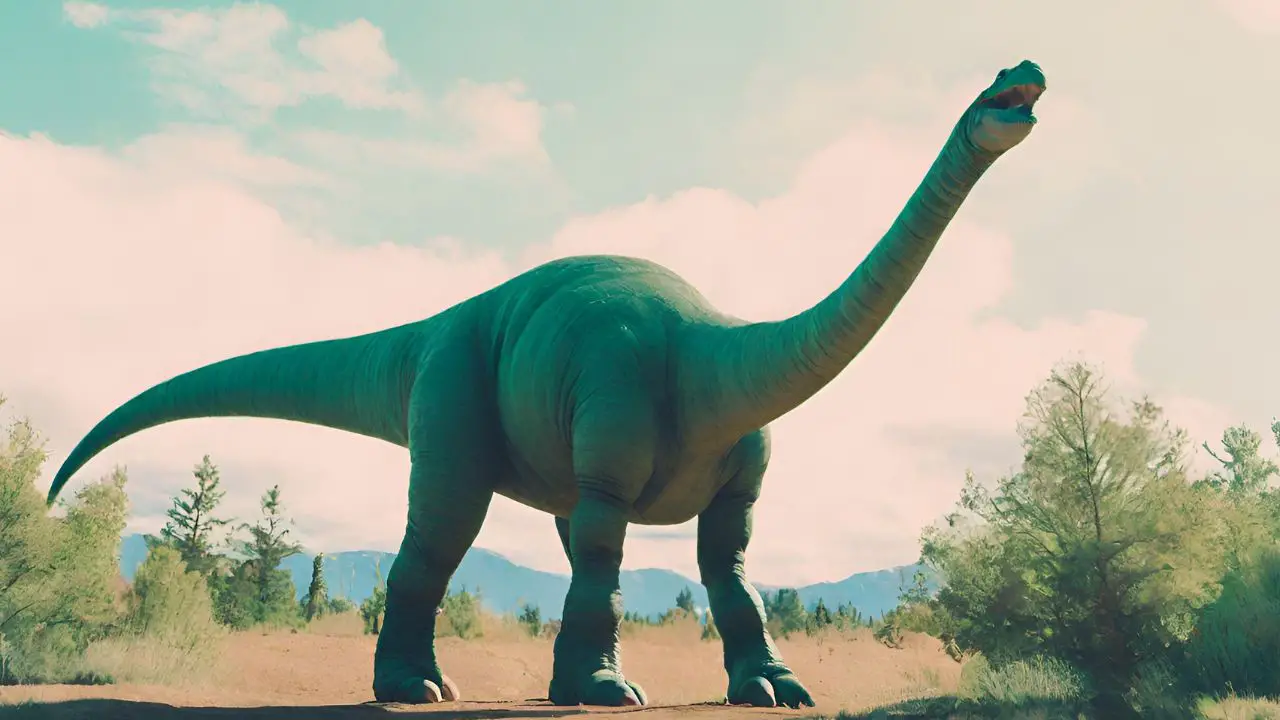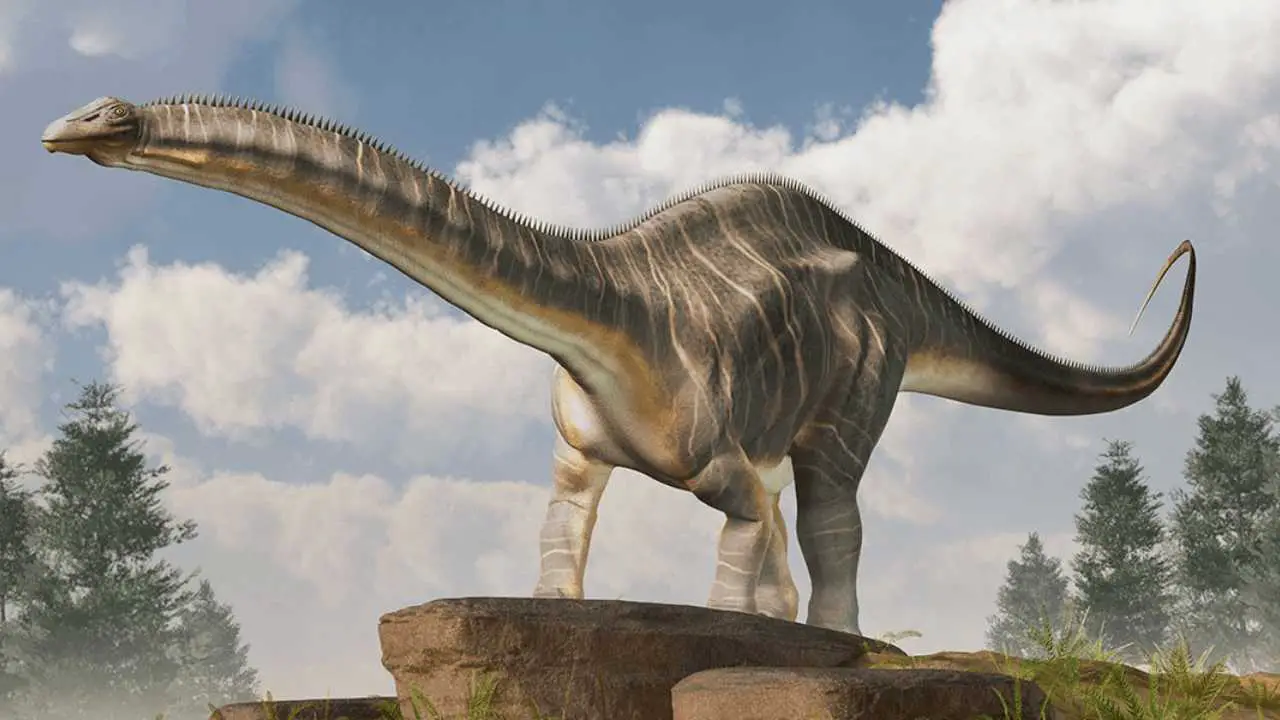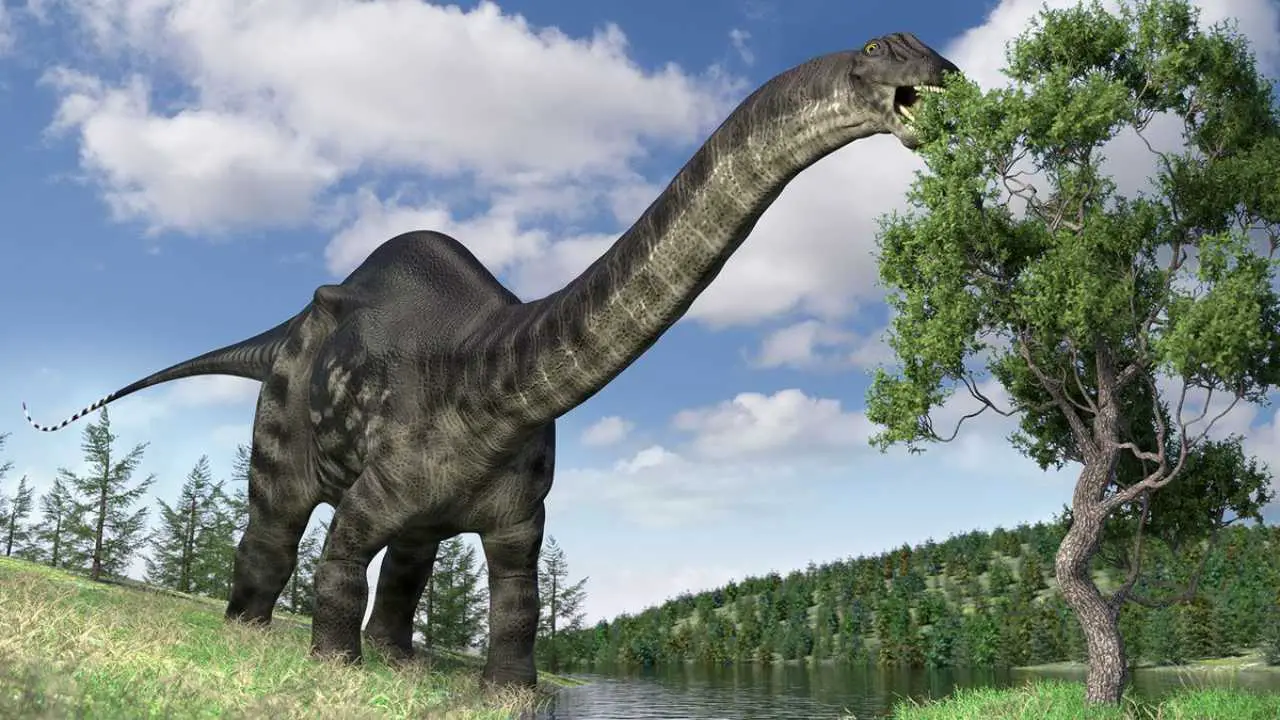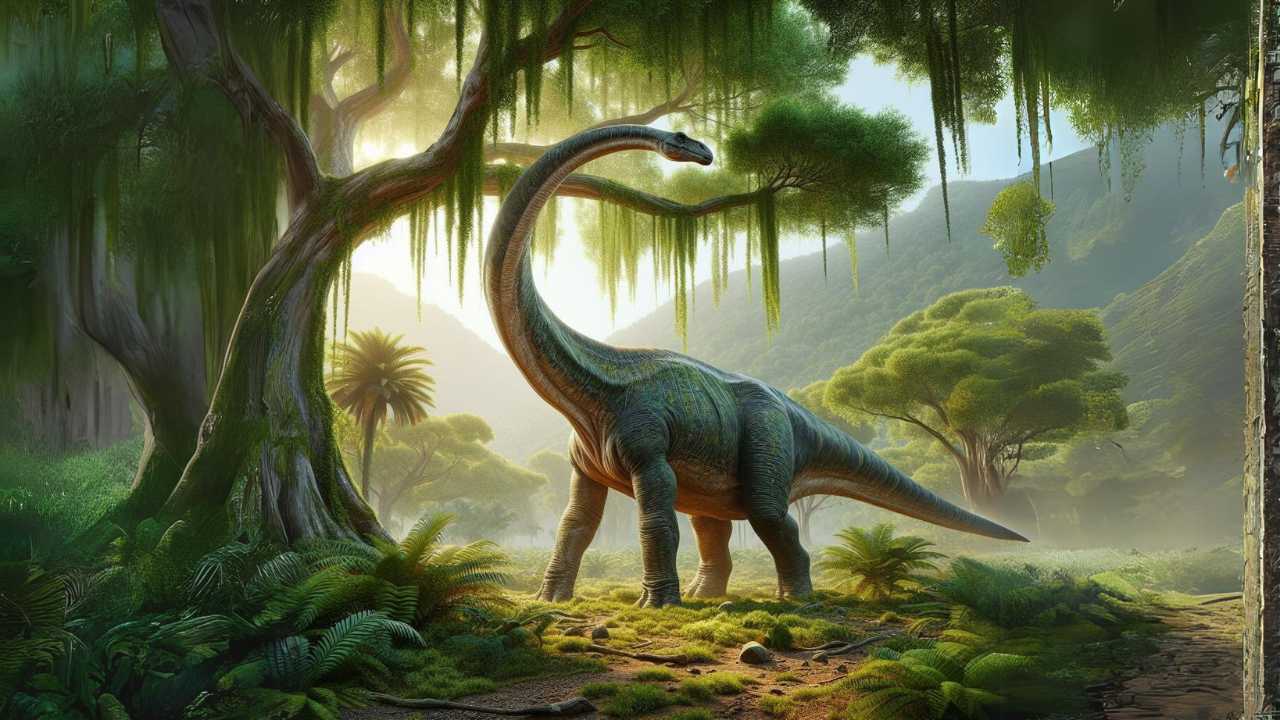Brontosaurus is a genus of large, long-necked, herbivorous dinosaurs. They roamed the Earth during the Late Jurassic period in the present-day United States. Here, we gathered information about the Brontosaurus, its discovery, physical characteristics, habitat, diet, reproduction, and much more.
Brontosaurus Facts

What is Brontosaurus
Brontosaurus is a genus of herbivorous dinosaurs with three recognized species. They lived during the Late Jurassic period (around 157 to 145 million years ago) in North America. They were giant and massive creatures with long necks, long tails, and relatively small heads. Like other Sauropods, they were quadrupedal (walked on all four limbs). They were likely herbivorous and lived in herds. Despite their massive size, they were relatively peaceful creatures.
Brontosaurus Discovery, Species, Types, And Scientific Classification
In 1879, Othniel Charles Marsh, American paleontologist and professor at Yale University, announced the discovery of a sauropod skeleton and recognized it to belong to a new genus he named Brontosaurus. Later, it was considered to be a type of Apatosaurus and included in the sub-family Apatosaurinae. Now, Brontosaurus is classified as a separate genus that has three species; Brontosaurus excelsus, Brontosaurus parvus, and Brontosaurus yahnahpin.
Brontosaurus dinosaurs belong to the Sauropod clade or group, characterized by giant size, long necks, long tails, and small heads that walked on all four limbs.
Scientific Classification
Domain: Eukaryota
Kingdom: Animalia
Phylum: Chordata
Subphylum: Vertebrata
Clade: Dinosauria
Clade: Saurischia
Clade: Sauropoda
Family: Diplodocidae
Sub-family: Apatosaurinae
Genus: Brontosaurus
Species: Brontosaurus excelsus, Brontosaurus parvus, Brontosaurus yahnahpin
Physical Characteristics Of Brontosaurus

Body Shape
Fossils of Brontosaurus demonstrate that it had a large body with a long neck. It had a small head relative to its huge body. Their cervical vertebrae were strong and heavily built to support their neck and head. Their necks were also equipped with air pockets, which could keep their massive necks light and easy to move. They had heavy, strong, and barrel-like bodies.
Their hindlimbs were slightly longer than their forelimbs, possibly to help in balancing the weight of their neck and tail. They had a long and strong tail ending with a whip-like structure. They could use their tails to defend themselves from predators.
The Brontosaurus skull has not been discovered but it could be likely similar to the skull of its close relative Apatosaurus. Like Apatosaurus, their skull could be also smaller in proportion to the body with a squared snout and spatulate (chisel-like) teeth in the jaws, adapted for eating plants and vegetation.
Size And Weight
Several estimates of Brontosaurus size have been made. Brontosaurus excelsus was the largest species, which measured 21 to 22 meters (69 to 72 feet) from head to tail and weighed about 15 to 17 tons (17 to 19 short tons). Their weight could reach as much as 25 tons.
Brontosaurus parvus and Brontosaurus yahnahpin were smaller species that had a head-to-tail body length of up to 19 meters (62 feet) and weighed around 14 tons (15 short tons). Juvenile specimens are also known. It is believed that the youngsters grew rapidly and attained adult size at around 15 years.
Brontosaurus Habitat

Scientists use fossil location to find out the habitat and era of a dinosaur. From the analysis of the surrounding rocks, they also determine the period when these dinosaurs roamed on the Earth.
Fossil records show that Brontosaurus lived in the present-day western United States. Most specimens were discovered in the Morrison Formation (a sequence of sedimentary rock formations during the Jurassic period) that extends from Montana to New Mexico, western North America. The fossils of Brontosaurus reveal that they lived there during the late Jurassic period, about 157 to 145 million years ago.
Wyoming is the site where the first fossil of Brontosaurus was discovered. Scientists agree that they lived in that region millions of years ago. Because of their herbivorous diet, researchers believe that they lived in grasslands and other habitats where plenty of vegetation was available to eat.
Diet
Brontosaurus were herbivores like other Sauropods and consumed vegetation like ferns, seed ferns, cycadeoids, and horsetails. The daily energy requirements were estimated in 2010, and it was supposed that they might daily need about 2×10⁴ to 50×10⁴ kilojoules of energy.
Brontosaurus likely ate a lot of food to maintain its massive size. James Farlow (1987) calculated that a dinosaur of Brontosaurus size would contain 5.7 tons (6.3 short tons) of fermentation content in its digestive system.
Brontosaurus also consumed rocks, which had no nutritional value for them. The rocks could help in digestion, breaking of plant matter in their stomach, and getting more nutrients from their diet.
Reproduction And Lifespan
All dinosaurs, including Brontosaurus, were egg-laying animals like many present-day reptiles. However, the newly hatched sauropods, including Brontosaurus, were small and weighed about less than 5 kg (11 lbs). But they had to attain a complete adult size in only about 30 years. Studies of fossils show that their youngsters initially gained as much as 2 tons of weight per year.
Brontosaurus might attain sexual maturity at the age of about 20 years. They could have lived an average lifespan of up to 100 years.
Threats And Predators
Brontosaurus may have very little or no predators. They could use their whip-like tail to fend off predators, probably small carnivorous dinosaurs. However, carnivorous dinosaurs were solitary hunters and could not prey on a giant Brontosaurus alone.
Like other dinosaurs, injuries and diseases might be a threat to Brontosaurus. Competition for food resources might be another real threat because they had to eat a lot of food to maintain their body size.
Extinction
All of the discovered fossils of Brontosaurus date back to the Jurassic period. There is no evidence of their existence after that period (about 145 million years ago). Researchers believe that they went extinct at the end of the Jurassic period.
Researchers do not know the exact reasons that caused the extinction of Brontosaurus. However, competition for food and other resources, climate change, and increased number of predators might be some of the reasons for their extinction.
Brontosaurus In Popular Culture
Brontosaurus is a well-known dinosaur in American culture. It is often featured in films, TV shows, books, and even cartoons. Brontosaurus was featured in the 1914’s classic animated short film Gertie the Dinosaur. It was the earliest animated film that featured a dinosaur. Other films that featured a Brontosaurus include The Lost World (1925), King Kong (1933), Lost Continent (1951), and Jurassic Park (1993). Brontosaurus is often portrayed as a gentle giant in cartoons.
Brontosaurus is the official logo of the American petroleum corporation Sinclair Oil Corporation. People also like models and toys of Brontosaurus.
Fun Facts About Brontosaurus
- Brontosaurus is a combination of the Greek words brontē and sauros, which means “thunder lizard”.
- Brontosaurus and Apatosaurus were believed to be the same types of dinosaurs for about a century.
- The newly hatched Sauropods (including Brontosaurus) were extremely small in comparison to their adults and had the size of the present-day adult goose.
- The adult Sauropods (including Brontosaurus) were about 10,000 times heavier than their newly hatched babies, which weighed less than 5 kg (11 lbs).
- While Brontosaurus was one of the biggest and tallest dinosaurs, they had the smallest brain relative to its body size.
- The skull of Brontosaurus has not been discovered yet, however, scientists predict its structure from its closest relative dinosaurs. Researchers assume that Brontosaurus might also have nostrils on their head similar to Apatosaurus.
Are Brontosaurus And Apatosaurus The Same Dinosaurs?
No, Brontosaurus and Apatosaurus are not the same dinosaurs. Both are the two different genera of Sauropod dinosaurs. However, scientists believed for about a century that both were of the same type and scientifically classified them as Apatosaurus. In 2015, researchers discovered that Brontosaurus was different from Apatosaurus and classified them separately. That is why both are sometimes confused and referred to as the same type.
Did Brontosaurus Eat Meat?
No, Brontosaurus were herbivores and ate vegetation. Due to their enormous size, some people may think they ate meat. But, Brontosaurus were herbivores and evolved a long and flexible neck to help with eating from tall trees.



